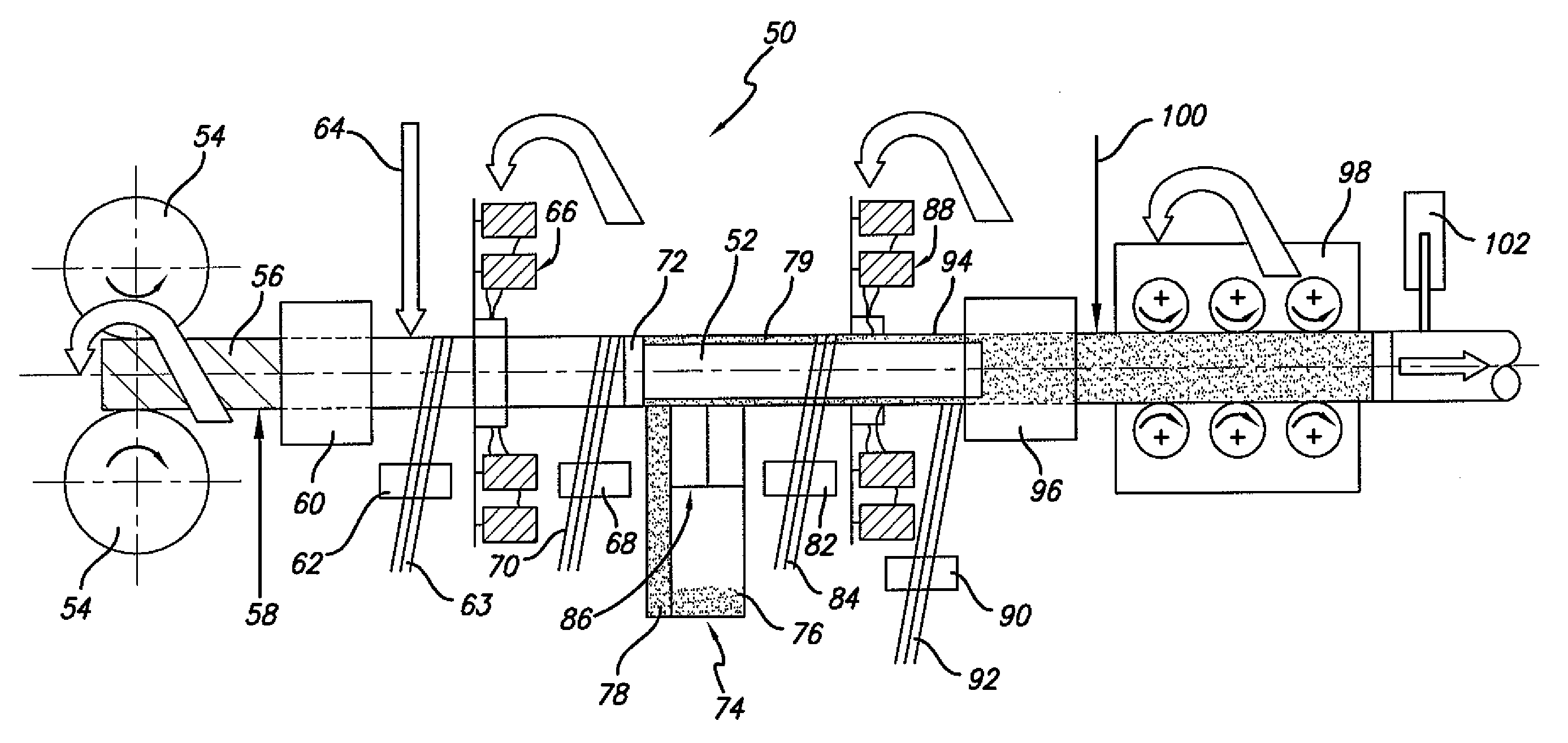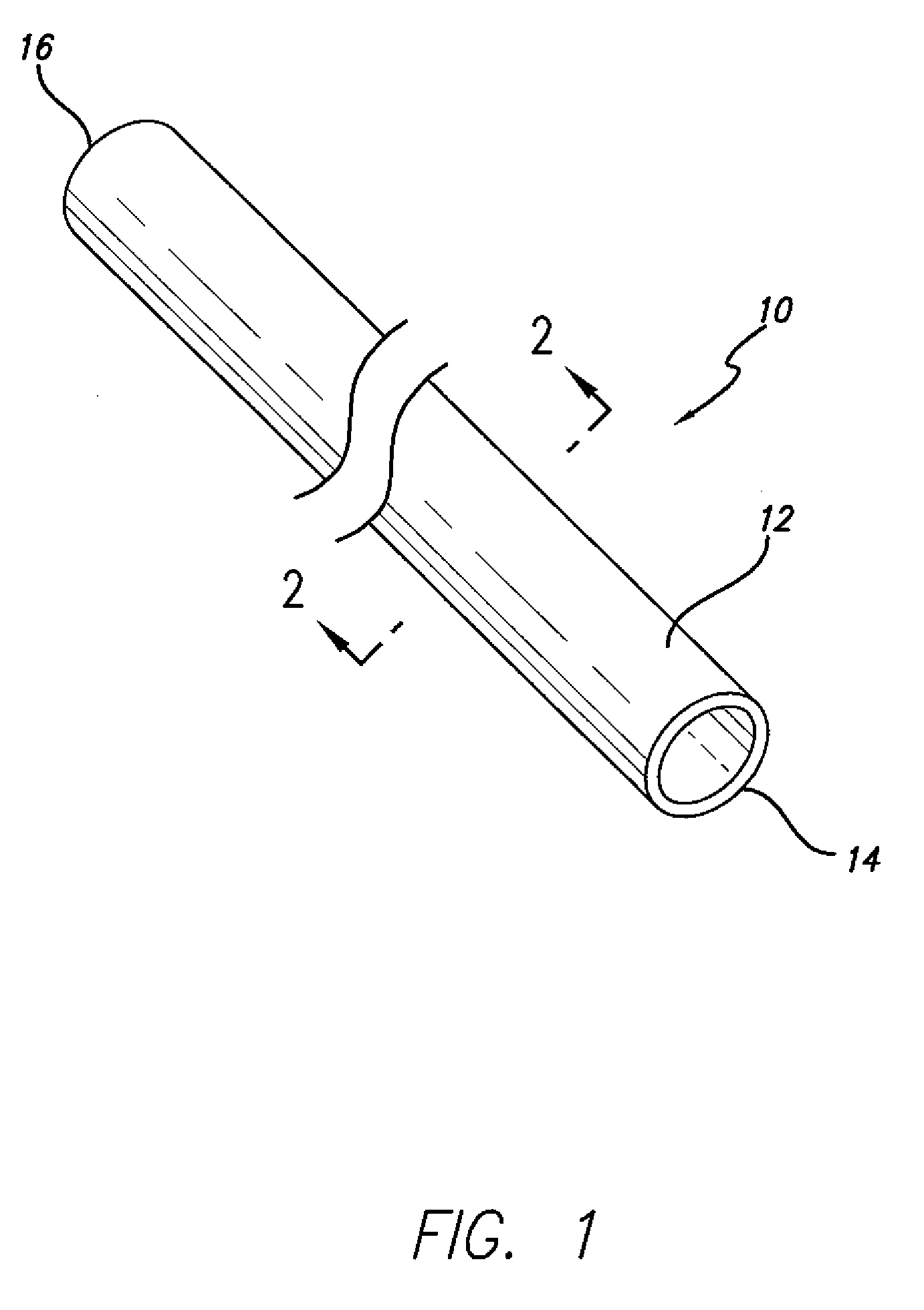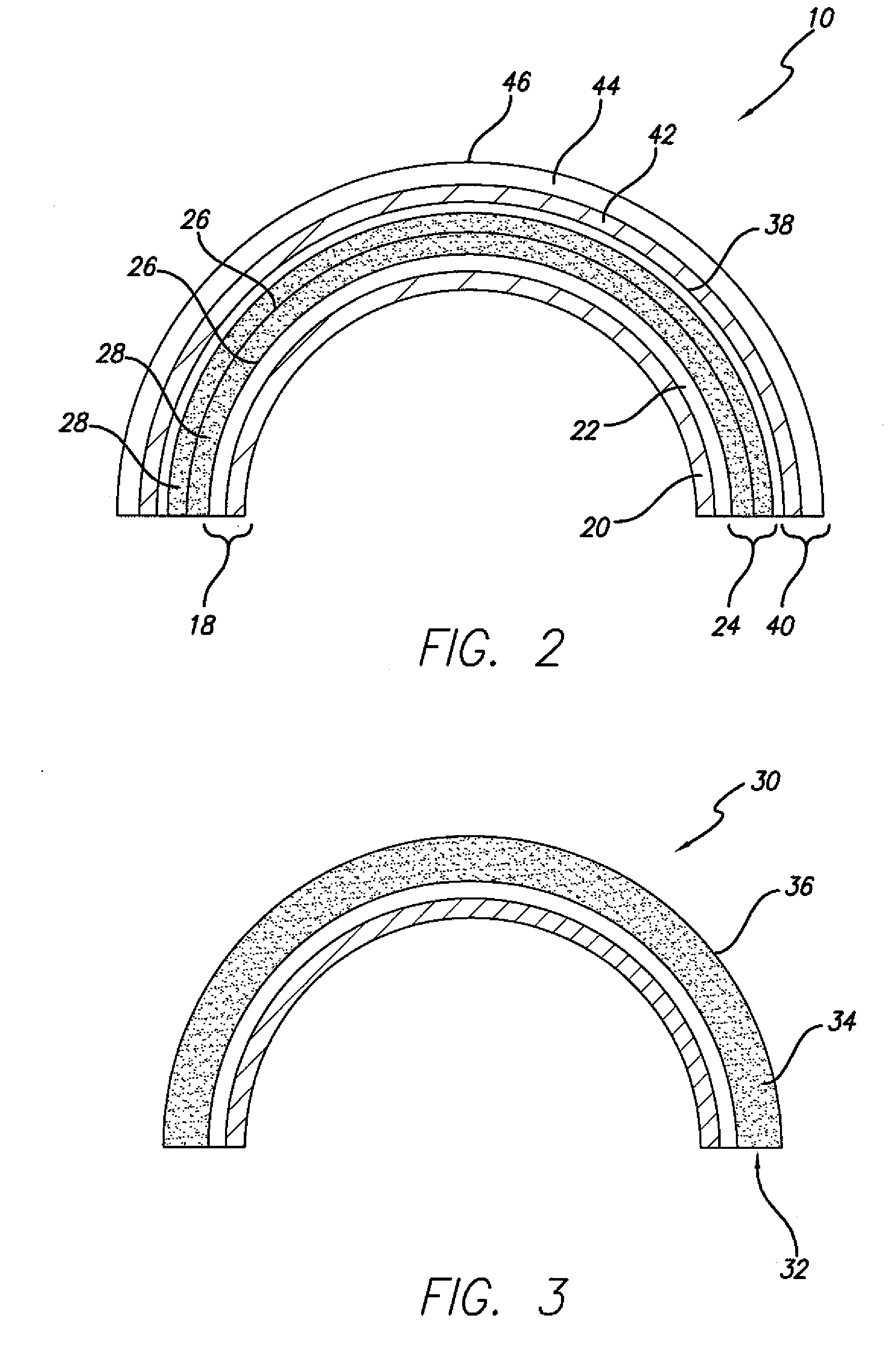Fiber reinforced resin polymer mortar pole
- Summary
- Abstract
- Description
- Claims
- Application Information
AI Technical Summary
Benefits of technology
Problems solved by technology
Method used
Image
Examples
Embodiment Construction
[0022]Fiber reinforced resin poles of this invention generally comprise a composite construction including a fiber reinforced resin structure including a plurality of axially-oriented fiber reinforced resin layers and one or more polymer mortar material layers, wherein such construction is specially engineered having combined properties of tensile strength and compression strength calculated to provide a desired axial tensile strength, axial compressive strength, and resistance to buckling to meet the particular end-use application conditions of the pole.
[0023]As explained in greater detail below, in an example embodiment, poles of this invention are preferably constructed using a continuous process, and the polymer mortar material is provided in the form of one or more layers within the pole to cost effectively provide a desired wall thickness to the pole structure to provide a desired compression strength. Further, poles of this invention use longitudinally- or axially-oriented fi...
PUM
| Property | Measurement | Unit |
|---|---|---|
| Fraction | aaaaa | aaaaa |
| Angle | aaaaa | aaaaa |
| Length | aaaaa | aaaaa |
Abstract
Description
Claims
Application Information
 Login to View More
Login to View More - R&D
- Intellectual Property
- Life Sciences
- Materials
- Tech Scout
- Unparalleled Data Quality
- Higher Quality Content
- 60% Fewer Hallucinations
Browse by: Latest US Patents, China's latest patents, Technical Efficacy Thesaurus, Application Domain, Technology Topic, Popular Technical Reports.
© 2025 PatSnap. All rights reserved.Legal|Privacy policy|Modern Slavery Act Transparency Statement|Sitemap|About US| Contact US: help@patsnap.com



